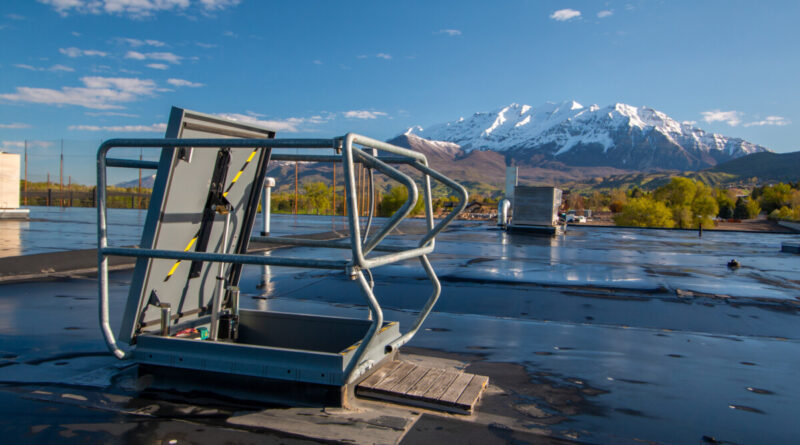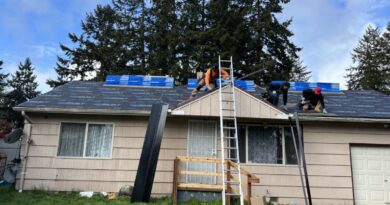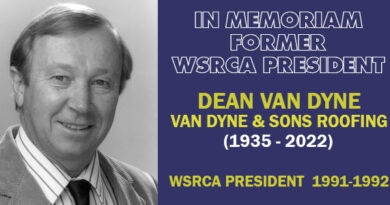Seasonal Roofing Conditions
How to Protect Workers from Falls
by Philip Jacklin, Continuing Education Program Manager, Diversified Fall Protection
The Occupational Health and Safety Administration (OSHA) requires construction companies to provide fall protection to employees exposed to falls six feet or greater. Despite that mandate, fall protection violations have been the most frequently cited violation since 2010. This article will offer advice on how to bolster current safety programs, train workers to follow safer work practices, and keep workers safe on rooftops through all weather conditions.
Statistics
Slips, trips, and falls continue to be a leading cause of injury and fatality in the workplace. According to the Centers for Disease Control and Prevention, roughly 300-400 workers die from fall-related injuries every year. Roofers, specifically, are at the highest risk with nearly ten times the fall fatality rates than any other profession. Tragically, the number of fatal falls occurring each year in the workplace has been on a steady incline for the last 15 years.
Fall Hazard Awareness
Before we can begin to make progress on preventing falls, we must properly train workers on the risks present when working on rooftops to increase their awareness on how to work safely. Proper fall protection training must occur before workers are authorized to work at heights, regardless of what fall protection equipment is being provided. Unfortunately, OSHA does not set clear mandates on how often fall protection training should occur with crews; companies should frequently evaluate the effectiveness of their training efforts by monitoring worker behavior and confirming workers comply with minimum safety standards. Many companies neglect to retrain employees when environmental or policy changes occur, and this could be why fall protection training requirements are also one of OSHA’s top ten most frequently cited violations.
OSHA requires companies to train and designate Authorized Persons before workers can use fall protection equipment and begin work at-heights. Authorized Person training can be performed internally or by an ANSI-accredited third-party trainer, like Diversified Fall Protection. This training should educate workers on the risks of falling from heights, how to maintain minimum OSHA compliance, and provide best practices on how to use their equipment properly, mainly by following ANSI Z359 guidelines and adhering to manufacturer instructions.
Companies must also train and designate at least one employee to a Competent Person level. The Competent Person will be the primary facilitator of an organization’s fall protection program. They are trained to a higher level of fall protection knowledge because OSHA assigns them the responsibility of performing fall hazard surveys for work sites, approving anchorages, authorizing employees to use fall protection equipment, inspecting equipment annually, and more. This training must be provided by an ANSI-accredited third-party trainer, like most fall protection equipment manufacturers.
Working Safely At Heights
Sloped roofs present workers with the obvious challenge of increased difficulties in maintaining their balance, but flat roofs can be just as dangerous if workers are more concerned with their tasks than staying away from the roof’s edge. Guardrail is an effective form of fall protection and can help workers identify how close they are to the edge of their walking working surface. Guardrail carries many more benefits as well: no user input is required, it can be built on-site or pre-fabricated by a manufacturer, and workers are not required to wear fall protection behind guardrail areas.
However, if guardrail is not a feasible solution on the rooftop, companies must provide other means of fall protection equipment. If the roof is being constructed, fall protection should be incorporated into the building process to protect workers during the construction of the roof as well as the entire life of the building. The earlier fall protection is installed on a roof, the safer every worker will be while working on that rooftop.
Horizontal lifelines are a common solution for sloped roof work. They can offer tie-off for multiple workers at a time and provide a wide working area without connecting into multiple anchor points. When installing horizontal lifelines, companies must consider if sufficient fall clearance is provided when accounting for the deflection distance of the lifeline material. They must also consider the deceleration distance of the user’s connection devices, typically a lanyard or self-retracting lifeline. The organization’s Competent Person must refer to the manufacturer instructions for their equipment to calculate the total fall clearance required before using these solutions. If insufficient fall clearance is available, it won’t matter how high quality the solution is, it won’t be able to successfully arrest a user’s fall before encountering the next lower level.
Seasonal Conditions to Consider
Companies must also account for current weather conditions before conducting roofing work. Winter typically brings increased precipitation and colder weather, a recipe for icy and slippery surfaces. Heavy snowfall can obscure holes or gaps in rooftops and expose workers to invisible fall hazards. Furthermore, high winds can bring strong gusts that cause workers to lose their balance while working, especially if carrying large items like wood planks that can act like a sail. If possible, companies should avoid performing work when these conditions are present but must protect workers who have to perform emergency maintenance or repairs in these areas.
If work must be performed in these unfavorable weather conditions, companies should take the time to help prepare workers and protect them from an increased chance of falling. In addition to making sure fall protection harnesses can still fit correctly when worn over bulky outerwear to stay warm, many roofers utilize anti-slip shoe adapters to help improve traction on slippery or sloped surfaces. Workers can also attempt to move slower or more cautiously, like in a zig-zag pattern, to promote stability.
Conclusion
While seasonal weather can slightly increase the risk of falls, data shows that the prevalence of falls occurs regardless of weather conditions. Falls account for nearly 40% of total fatalities in the construction industry and over 80% of roofing industry deaths. This is especially tragic in light of the resources available to companies to bring awareness to their employees and the solutions available in the marketplace. If companies prioritize the safety and well-being of their employees and regularly include fall protection equipment in the bidding and budgeting of projects, there is hope that we can work to prevent these tragedies from occurring in the future.



